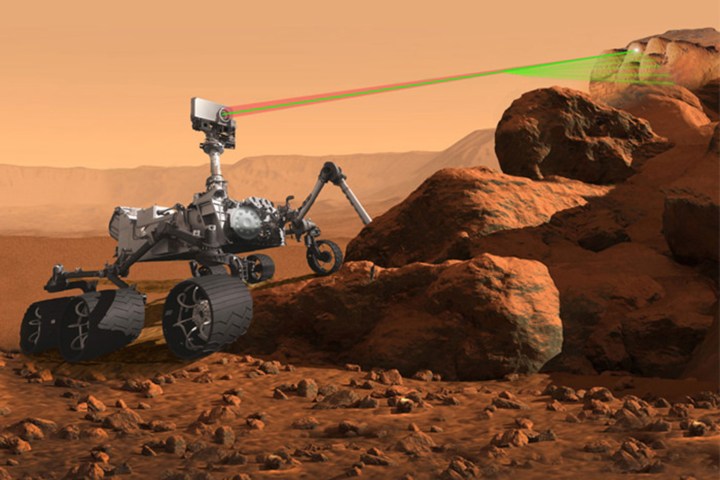
The mission, assuming everything goes to plan, will see the rover carry out geological assessments of its landing site on Mars, as well as examine the habitability of the harsh environment.
It will also search for signs of ancient Martian life, and attempt to make an assessment of the natural resources and hazards for future human visitors. Its work could also lead to the first-ever return of rock samples from the planet.
Landing site
After a recent meet-up with scientists at a workshop in Monrovia, California, NASA has taken a big step toward choosing the all-important landing site for Mars 2020.
The team narrowed the choice from eight locations to three, though the original list included 30 different sites. First up is Columbia Hills, Gusev Crater. “Mineral springs once burbled up from the rocks of Columbia Hills,” NASA said on its site, adding that the discovery that hot springs once flowed there was a notable achievement of the Mars Exploration Rover, Spirit, which stopped operating in 2010 after arriving on Mars in 2004.
Jezero Crater is another potential landing site. “Water filled and drained away from the crater on at least two occasions,” NASA said, adding that “more than 3.5 billion years ago, river channels spilled over the crater wall and created a lake.” Scientists believe that “microbial life could have lived in Jezero during one or more of these wet times. If so, signs of their remains might be found in lakebed sediments.”
The third location under consideration is Northeast Syrtis. NASA’s knowledge of the area reveals that “underground heat sources made hot springs flow and surface ice melt. Microbes could have flourished here in liquid water that was in contact with minerals. The space agency adds that the area “holds a rich record of the interactions that occurred between water and minerals over successive periods of early Mars history,” a factor that helped it onto the shortlist.
To help it make its final decision, expected some time next year, the team will further consider various criteria for each of the three sites. These include determining whether the rover would be able to achieve all of the mission’s scientific objectives, and whether it would be able to move around safely without encountering any mobility issues.
The 2020 mission, which will include drilling through Mars’ surface to gather rock samples, will be the first step in a multi-mission effort to get material from the red planet back to Earth.
Speaking about Mars 2020 last year, Geoffrey Yoder, acting associate administrator of NASA’s Science Mission Directorate, said, “This mission marks a significant milestone in NASA’s Journey to Mars — to determine whether life has ever existed on Mars, and to advance our goal of sending humans to the red planet.”


